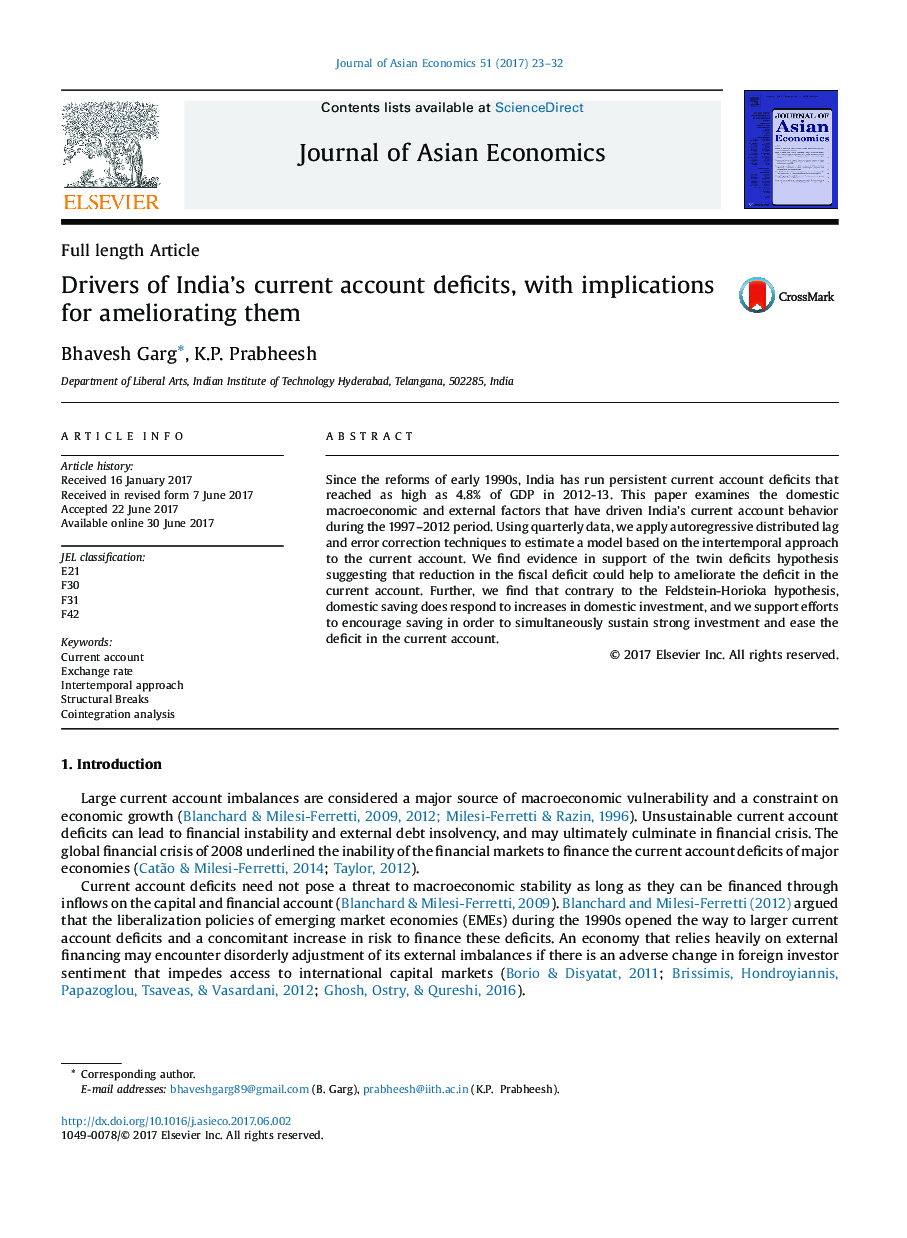| Article ID | Journal | Published Year | Pages | File Type |
|---|---|---|---|---|
| 5087144 | Journal of Asian Economics | 2017 | 10 Pages |
Since the reforms of early 1990s, India has run persistent current account deficits that reached as high as 4.8% of GDP in 2012-13. This paper examines the domestic macroeconomic and external factors that have driven India's current account behavior during the 1997-2012 period. Using quarterly data, we apply autoregressive distributed lag and error correction techniques to estimate a model based on the intertemporal approach to the current account. We find evidence in support of the twin deficits hypothesis suggesting that reduction in the fiscal deficit could help to ameliorate the deficit in the current account. Further, we find that contrary to the Feldstein-Horioka hypothesis, domestic saving does respond to increases in domestic investment, and we support efforts to encourage saving in order to simultaneously sustain strong investment and ease the deficit in the current account.
